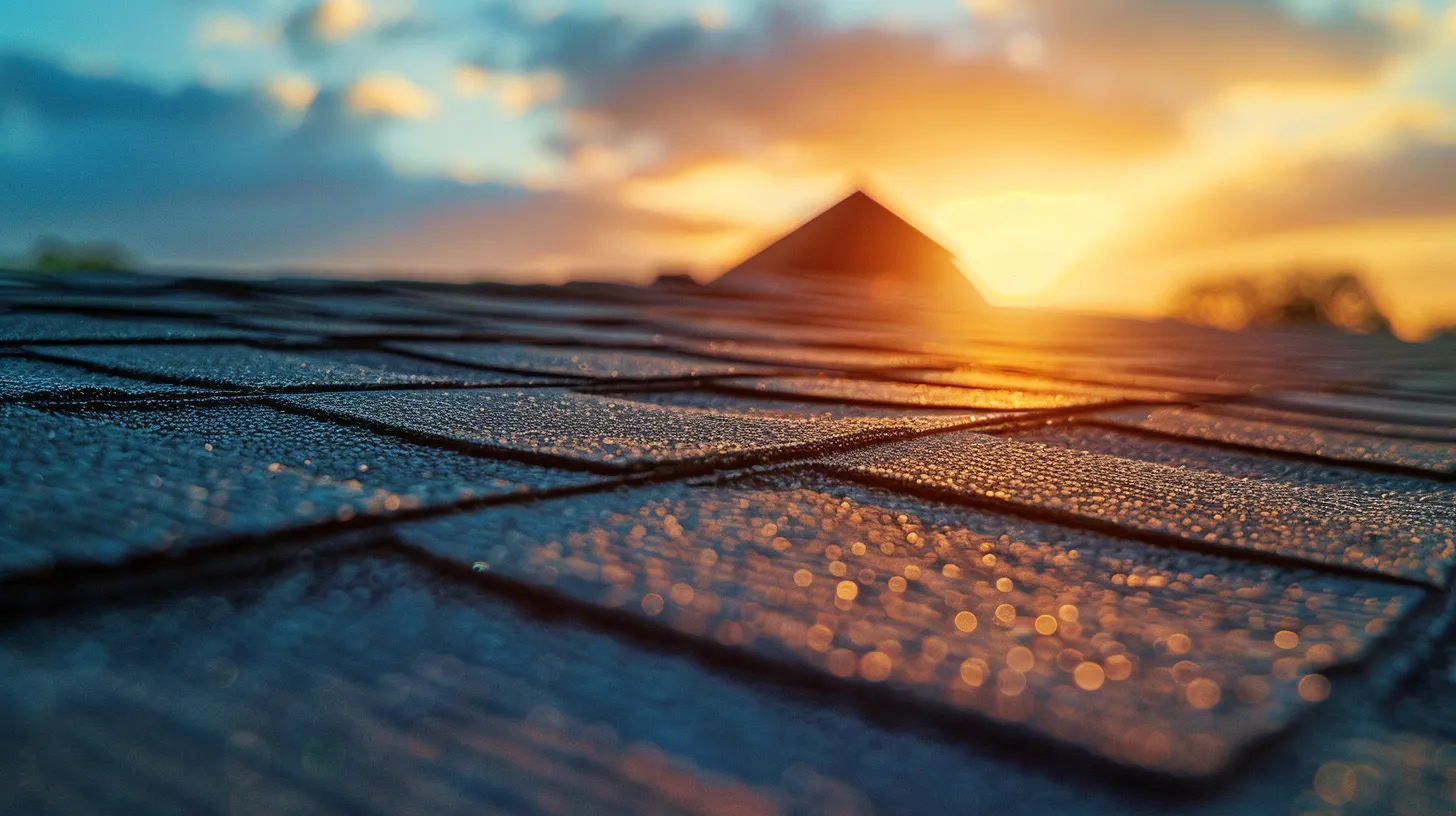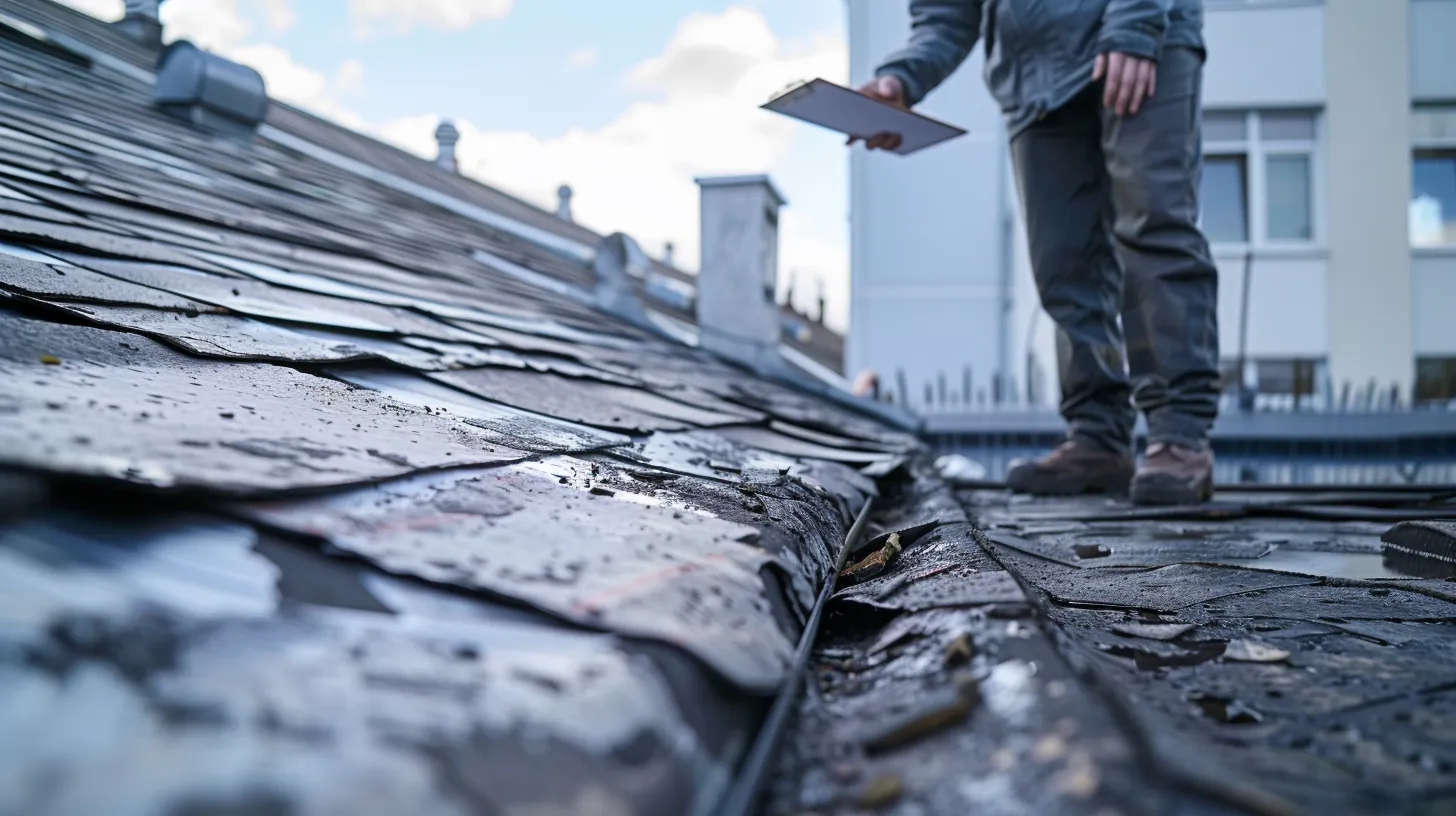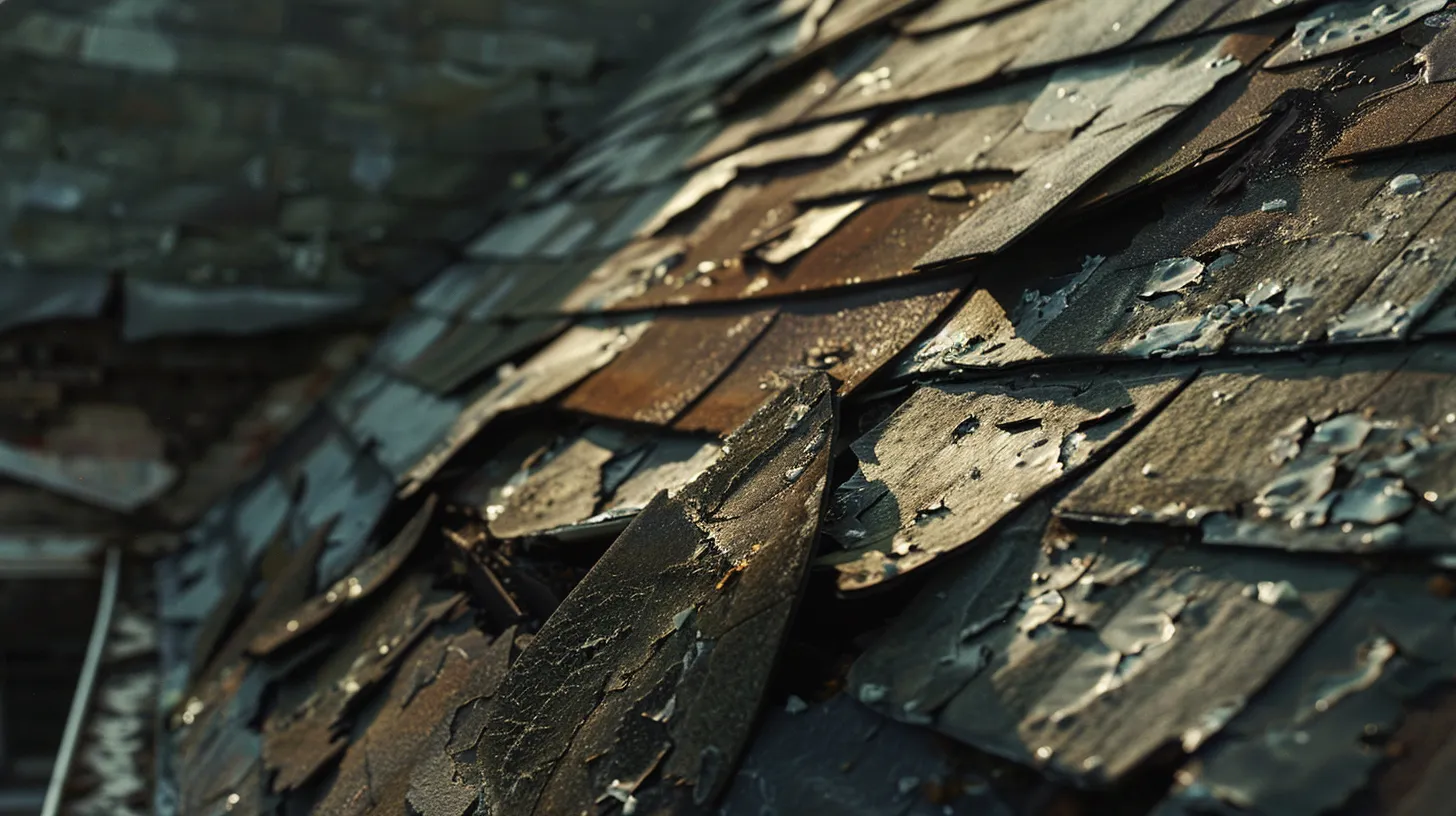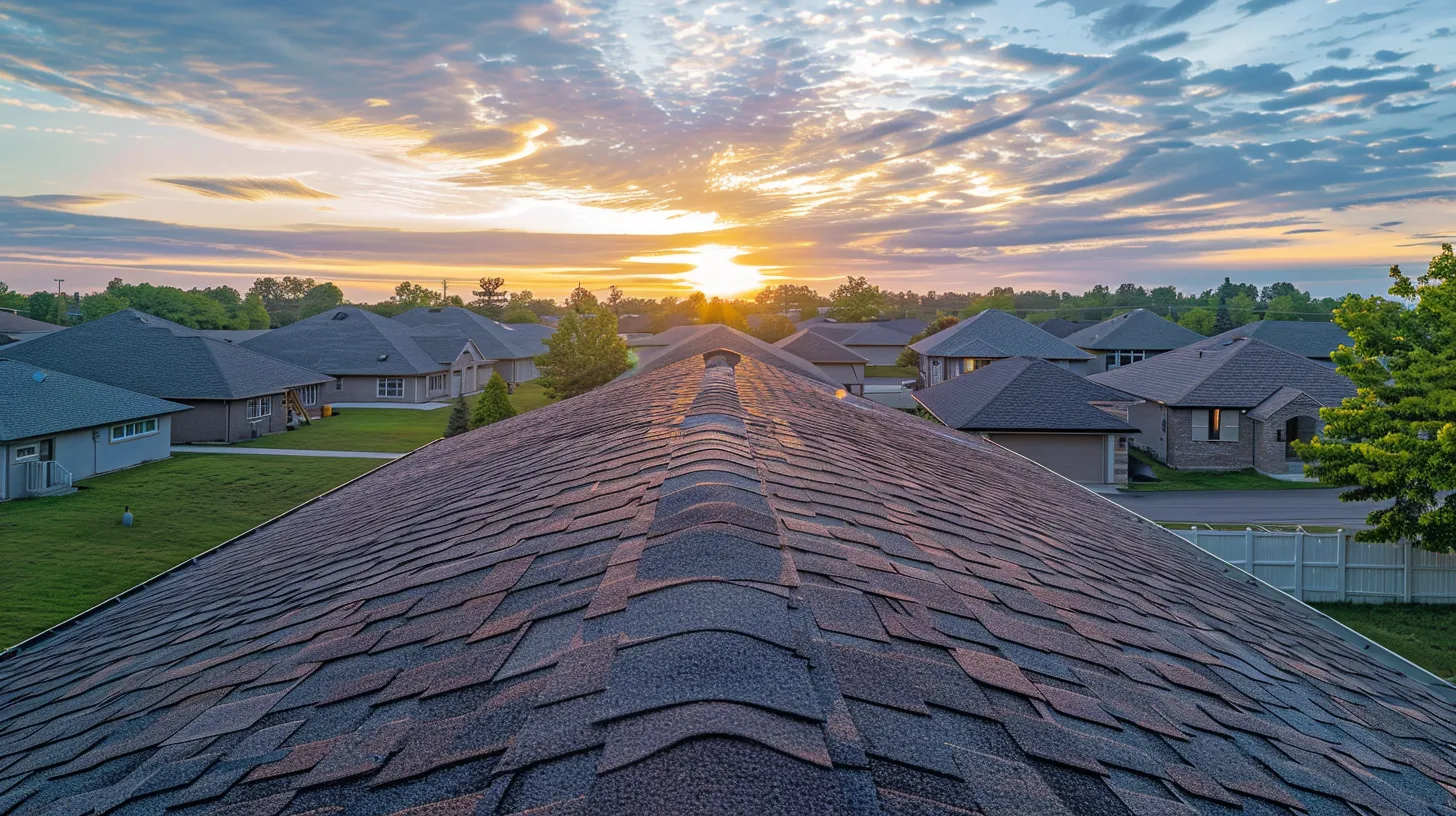
Easy Roof Maintenance Strategies to Limit Repair Costs
Crucial Roof Maintenance to Avoid Costly Repairs
Are you tired of unexpected expenses due to roof issues? This post on crucial roof maintenance explains normal roof wear and tear, identifies roof maintenance needs, and outlines routine upkeep actions. You will learn how to spot damage early and avoid expensive repairs. Read on to gain effective tips that directly address common roofing concerns and help you keep your home safe and sound.
Key Takeaways
- you inspect your roof regularly to catch early signs of damage
- you schedule professional maintenance when weather or debris affect roof condition
- you document repairs and inspections to support warranty requirements
- you clear gutters and check vents for proper airflow and water drainage
- you follow a proactive plan to avoid costly repairs and maintain roof integrity
You keep your roof in prime condition with regular roof repairs that stop minor issues from growing into major problems.
You inspect any damaged roof promptly to avoid unexpected leaks and structural concerns.
You request a free estimate to understand the expense before beginning any roof repairs, ensuring you make informed choices.
You check your chimney and watch out for hail damage after severe weather to keep your roof and surrounding areas secure.
You have grasped the main points laid out in the key takeaways. Now we turn our attention to how everyday use gradually affects your roof.
Normal Roof Wear and Tear
You see dark spots and fading roof color from prolonged sunlight on your south facing roof. Debris buildup and high wind conditions may lead to water damage that affects your insurance policy and attic integrity. These issues often require roof repair replacement if left unchecked, so regular inspections are critical to protect your home.
Dark Spots
You notice that dark spots on your roof often stem from steady exposure to ultraviolet rays, which degrade the roofing material over time. This issue can shorten your roof’s life expectancy while creating conditions that allow moss to thrive, affecting the overall durability and look of your roofing system.
You may find that these dark spots signal that your roofing needs closer attention before minor damage turns into a larger repair project. Regular checks help you maintain the roof’s integrity, keeping ultraviolet damage in check and ensuring that moss growth does not compromise the structure that guards your home.
Fading Roof Color
You notice the fading roof color signals gradual wear that might lead to increased debris accumulation and potential issues with your homeowners insurance after severe weather. You understand that this color change calls for an immediate inspection to prevent further deterioration and safeguard your investment:
You then arrange a detailed inspection to assess the damage incurred from severe weather events, ensuring that no hidden issues affect your roof’s performance. You also submit your email address to receive updates and recommendations, allowing you to make informed decisions about necessary repairs.
South Facing Roof
You know that a south facing roof often experiences intense sun exposure, which can speed up wear and tear on its materials. You pay close attention to proper ventilation and flashing conditions to limit moisture buildup and reduce the risk of ice dam formation:
You monitor your south facing roof regularly to catch early signs of damage, making sure that any issues with moisture or ice dam formation lead to immediate roof repair. You rely on practical inspections to maintain proper ventilation and flashing integrity, which keeps your home secure and minimizes repair costs.
Debris on Your Roof
You notice that debris on your roof can block water flow, causing unnecessary wear and tear while inviting algae buildup that may later spread toward the ceiling. Regular checks help you determine when to call a roofer, ensuring your warranty remains valid and your roof stays in good shape:
You inspect your roof frequently to remove debris before it causes hidden damage or affects roof durability. This practical approach not only secures your warranty but also keeps algae at bay while protecting the ceiling and overall home structure.
High Wind Conditions
You monitor your roof closely when high winds occur, understanding that even a sturdy metal roof or resilient tile system can suffer from loose soffit panels and other signs of storm damage:
You notice that following a strong storm, your roof may display subtle signs of distress that could lead to larger issues if ignored. You take proactive steps by examining the soffit and roof surfaces, ensuring you address any problems that might develop into costly repairs in the near future.
The roof shows a familiar wear, a steady marking of time. Look closer now, for subtle hints point to deeper flaws.
The Signs of a Damaged Roof
You check for damaged vents that may cause a leak, and compromised flashing weakens areas around metal fittings and roof shingle edges. You also notice a sagging roof, much like a dam under pressure from heavy snow. This section guides you through each sign, providing practical insights to keep your roof in prime shape and avoid expensive repairs.
Damaged Vents
You check for any signs of damaged vents during your home improvement projects because these issues can lead to the growth of mold and overall wear that affects longevity. When vent components fail during high wind events, you risk increasing repair costs and complications with your insurance company.
You should review the condition of each vent to avoid the escalation of disconnected parts and water damage that may worsen over time:
- Inspect vent seals for wear
- Clear any blockages that might harbor mold
- Secure loose fittings to withstand wind
This systematic review not only protects your roof but also supports your ongoing home improvement efforts.
Compromised Flashing
You notice that compromised flashing may lead to water seepage and roof damage, especially on a flat roof where proper drainage is key. You also see signs such as curling shingles and loose asphalt shingle installations during construction that might warrant a roof replacement:
- Inspect flashing seals regularly
- Check for curling shingles near flashings
- Review asphalt shingle conditions
You address these issues by scheduling timely inspections and repairs, ensuring your roof maintains its protective role. You use professional construction insights to guide your maintenance decisions and avoid further repair expenses.
A Sagging Roof
You notice a sagging roof can signal serious roof damage caused by ongoing wear that undermines your home’s structural integrity. You must inspect these signs as early indicators of potential issues that might affect your policy and trigger concerns with insurance companies.
You often find that a sagging roof not only raises the risk of leaks but also complicates claims with home insurance. You should promptly hire a professional to evaluate the situation, ensuring your maintenance routine alleviates wear and prevents further damage.
Weathered shingles and dented beams speak plainly of past storms. Now you focus on the fixes that will keep your roof strong.
Identifying Roof Maintenance Needs
You assess roof conditions each season using proper inspection tools and know when professional help is necessary. You gain essential insights to spot issues early, prepare for repairs, and preserve your home’s strength. This section offers practical advice on seasonal assessments, the right tools, and calling experts at the right time for informed maintenance decisions.
Assessing Roof Conditions Seasonally
You review your roof condition regularly as the seasons change, ensuring your inspection routine catches early signs of wear from weather fluctuations and temperature drops. You use a few reliable tools to check for missing materials and signs of damage that may lead to more extensive repairs if left untreated.
You conduct seasonal evaluations of your roofing elements when shifting from hot to cold months, keeping an eye on potential issues that could compromise structural strength. You rely on hands-on expertise to track any deterioration, so you can schedule prompt fixes that maintain the durability of your roof.
Key Tools for Roof Inspections
You bring a quality ladder, flashlight, and moisture meter to every inspection to accurately assess roof conditions. These tools empower you to spot early signs of wear and record observations that help you plan necessary repairs and maintenance steps.
You use a high resolution camera to capture close-up images of roof details, ensuring that no issue goes unnoticed. This approach lets you communicate effectively with professional contractors, so you can address small defects before they lead to costly repairs.
When to Call in Professionals
You know that minor issues might sometimes hide bigger problems, so you should call in professionals when inspections reveal persistent leaks or structural irregularities. Relying on specialized roofing experts ensures that critical damage is addressed quickly, keeping costly repairs at bay.
If your maintenance efforts do not resolve emerging concerns, it is wise to seek professional advice immediately. Trusting experienced contractors not only preserves your roof’s durability but also secures your home against further deterioration.
Now, you will start the simple work that keeps your roof strong. We show you steady actions that secure every beam and shingle.
Routine Maintenance Actions
You focus on cleaning gutters and downspouts, inspecting and repairing flashing, removing debris, and checking and replacing shingles. These routine maintenance actions help you improve roof performance and avoid unexpected repair costs, ensuring your home stays protected year after year.
Cleaning Gutters and Downspouts
You keep your roof resilient by cleaning gutters and downspouts routinely, ensuring water flows away from your home effectively. When debris accumulates, it creates blockages that result in water damage and increased repair costs:
- Remove accumulated leaves and twigs
- Flush out downspouts regularly
- Inspect for any clogging issues
- Secure gutter attachments
You maintain the longevity of your roofing system by scheduling regular cleaning sessions, especially after heavy storms, to prevent clogs and water damage from escalating into major repairs. This proactive practice supports a robust roof maintenance routine and minimizes unexpected expenses.
Inspecting and Repairing Flashing
You inspect flashing around your roof regularly because proper sealing prevents water from seeping into your home, leading to costly repairs. You address any lifting or cracks immediately, ensuring that your roof retains its durability and protects your property effectively.
You pay close attention to flashing during your routine maintenance, checking for any signs of deterioration that could worsen with seasonal weather changes. You have found that timely repairs not only save you money but also extend the life of your roof, making your investment more secure.
Removing Debris From Roof Surfaces
You remove debris from your roof surfaces to keep water drainage clear and reduce the risk of damage to your roofing materials. You carefully clear leaves, branches, and other remnants to minimize wear and protect your warranty against future repair expenses.
You regularly inspect your roof for accumulated material that may block water flow or encourage mold growth. You take prompt action to remove any buildup, ensuring that your roof remains functional and your investment stays secure.
Checking and Replacing Shingles
You check your shingles during routine maintenance to catch any signs of wear or damage. You inspect for any loose, cracked, or missing pieces to avoid larger repair costs later on.
You review each shingle carefully and note areas that may need attention by following these steps:
- Examine each shingle for visible cracks
- Look for signs of lifting or detachment
- Replace damaged pieces before issues worsen
Your routine fixes keep the roof steady. Next, you take careful steps to keep it strong for future storms.
Preventative Measures to Prolong Roof Life
You install roof coatings to shield surfaces from wear, boost ventilation for better air flow, and seal potential leak points to keep your investment secure. These measures work together to extend your roof’s life and reduce repair costs, ensuring lasting protection and sound roof maintenance practices.
Installing Roof Coatings
You secure your roof’s longevity with roof coatings that protect against harsh weather, UV exposure, and moisture damage. You lower repair costs by selecting quality coatings that add a resilient shield against the elements:
- Improved moisture protection
- Longer-lasting roof surfaces
- Reduced maintenance expenses
You review your coating options carefully and take action based on your roof’s specific needs. You save time and money by applying these preventive measures, ensuring your investment stays protected with every season.
Enhancing Ventilation
You control the quality of your roof by ensuring proper ventilation, which keeps moisture away and reduces the risk of expensive repairs. You check that all vents are clear and function properly, allowing air to circulate and keeping your roofing system in optimal condition.
You protect your investment by scheduling routine exams to confirm that ventilation openings remain unobstructed. You notice that improved airflow helps balance underground temperatures and prevents water buildup, preserving the strength and longevity of your roof.
Sealing Potential Leak Points
You examine your roof for weak joints and seams that could invite water, addressing these potential leak points with timely repairs. You seal vulnerable areas using quality materials, ensuring your roof stays secure and free of moisture damage.
You act promptly when you notice signs of wear around flashing or joints to avoid future leaks. You invest in proper sealing measures that provide lasting protection, thus reducing the risk of expensive repair projects later on.
Your regular care keeps the roof strong today. Recording each repair makes tomorrow’s work clearer.
Documenting Maintenance for Future Reference
You keep track of your roof’s upkeep by recording inspections, scheduling regular maintenance, and reviewing warranty requirements. This ensures you have a clear history for future reference, aiding you in making informed decisions about repairs and service planning. These steps help you avoid unexpected expenses and secure your home’s integrity.
Keeping Records of Inspections
You record each roof inspection with clear notes and photos to track repair history and material condition over time. Keeping these records allows you to identify recurring issues and make data-driven decisions, reducing unexpected roof repair costs.
You maintain detailed logs after every roof maintenance check to document improvements and areas of concern. This organized approach helps you communicate effectively with service providers and plan future maintenance tasks with confidence.
Scheduling Regular Maintenance
You set up a maintenance schedule that tracks roof inspections and repairs, ensuring you document every task to avoid gaps in your records and unexpected repair costs:
- Regular roof inspections and condition checks
- Cleaning gutters and downspouts routinely
- Timely repair of flashing and shingles
You record each maintenance activity to support clear communication with contractors and to create a reliable history for future reference. This proactive method helps you plan better repairs and keeps your roof in strong condition throughout all seasons.
Understanding Warranty Requirements
You check the warranty documents from your roofing contractor to understand the specific repair and maintenance records needed for warranty coverage. You review the requirements actively, ensuring that each roof inspection and service is documented to support your claim if an issue arises.
You keep detailed, dated records of routine maintenance and any repairs performed to verify compliance with warranty terms. You use these documented records as evidence of proper upkeep, which can help protect your financial interests and avoid extra repair expenses in the future.
The records capture every solid repair that has kept your home safe and strong. Next, clear final words bring every effort together as you see the full impact of your work.
Conclusion
You stay ahead of expensive repairs by keeping up with routine roof maintenance. You inspect and clean your roof regularly to catch issues early.
You monitor and repair small problems before they turn into large repair bills. You use professional services to ensure your roofing system remains secure and reliable.
You document all maintenance tasks to keep a clear record for future reference. You use these records to support your decisions and manage repair expenses effectively.
You benefit from a proactive approach that minimizes costly repairs. You secure your investment by following a consistent roof maintenance routine.
Frequently Asked Questions
What signs show early roof damage?
You might notice warped shingles, granule runoff in gutters, water marks on your ceiling, or cracked tiles. These early signs of roof damage suggest you should seek a professional inspection.
How do you assess routine roof maintenance needs?
As a roofing contractor, you inspect for loose shingles, debris, and damage during regular roof upkeep. Check gutters, flashing, and sealants to ensure your home remains well-protected against water issues.
Which maintenance actions help extend roof life?
Regular inspections, cleaning gutters, repairing loose shingles, and removing debris help prolong roof life by preventing leaks and further damage.
What measures prevent costly roof repairs?
Regular inspections by a qualified professional help you spot issues early. Routine maintenance, including clearing debris and promptly addressing minor damage, reduces the likelihood of leaks and costly repairs, keeping your roof in superior condition.
Why is recording roof maintenance important?
Recording roof maintenance secures a clear history of repairs and inspections, which aids warranty claims and future service decisions while protecting your home’s value.
Conclusion
You safeguard your home by addressing minor roof issues early and scheduling regular inspections to catch hidden damage. You clear debris and examine key areas like vents and flashing to stop simple wear from escalating. You take measured steps after severe weather and monitor signs like dark spots or fading color to steer clear of costly repairs. You secure your investment through consistent, proactive roof maintenance that reduces long-term expenses and builds peace of mind.




